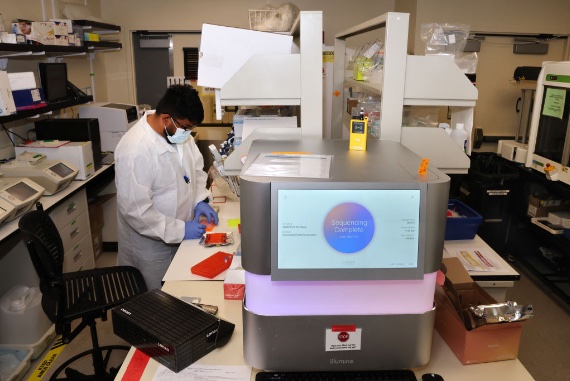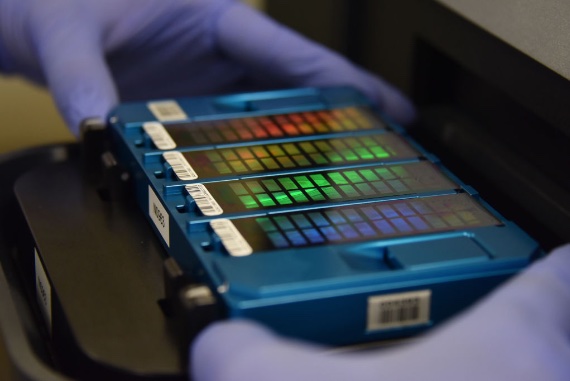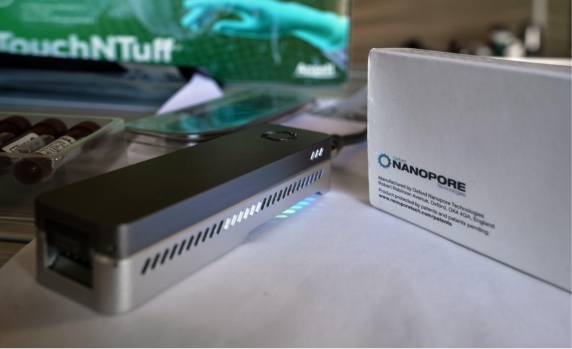Want to have your own complete genome? No problem. Today, a simple Google search offers a wide range of genetic tests that can be ordered directly. However, the vast majority of them don’t actually read the genome, but only analyse certain genetic variants linked to diseases, ancestry or personality traits. If we want to have our DNA read, we should look for sequencing services. Those that offer the “whole exome” will only sequence the protein-coding regions of genes—less than 2% of the total genome—while other companies will generate the sequence of almost the entire genome, as the Human Genome Project (HGP) did at the beginning of this century.

Launched in 1990, the HGP published the draft of the first human genome in 2001. Two years later, at a cost of almost three billion dollars and using 1970s technology, the sequence was completed. In reality, what was announced at the time was not the complete genome, but 92% of it, leaving out certain segments of highly repetitive sequences that could not be read with the technology of the time. But the titanic initiative of the HGP inspired many enterprising scientists to develop new DNA sequencing techniques, now in their third or even fourth generation, which have made it possible to fill in the gaps. In March 2022, the remaining 8% was published, except for the complete sequence of the male Y chromosome, which appeared in another study in December 2022. This complete sequence is expected in 2023, but from one individual. Meanwhile, the pangenome, a sequence combining the sequences of 47 people representing human ethnic diversity, has also been published.
Second-generation platforms
Thanks to these technological advances, and although not as complete as these latest studies, the genomes of more than 30 million people have already been sequenced, and it has been done with what is probably the most spectacular reductions in price and delivery time in human history: at the conclusion of the HGP, it was predicted that the cost of a genome would fall from $3 billion to just $1,000 in a few years, and the sequencing time would be reduced from 13 years to a few hours. On 14 January 2014, US-based Illumina, the market leader in sequencing technology, announced that it had reached the $1,000 milestone with its HiSeq X Ten platform, which can sequence a genome in less than three days.

But Illumina is not the only player, nor is $1,000 the lowest price point in this explosively growing market. As for the former, Illumina offers several second-generation platforms (also known as Next-Generation Sequencing, or NGS), the technological breakthrough that introduced massively parallel sequencing, which has drastically reduced costs and time and has produced 90% of the genomes sequenced. Illumina faces competition from other companies such as Thermo Fisher Scientific, QIAGEN and the Chinese firm MGI (a subsidiary of BGI Group, formerly Beijing Genomics Institute), which also use NGS, the dominant sequencing platform in the market, albeit with technical variations.
The new DNA sequencers
This second generation is being challenged by a third, based on technologies that allow individual DNA strands to be read without the need to make multiple copies by PCR, as required with NGS platforms. In this third generation, the companies Pacific Biosciences (PacBio) and Oxford Nanopore Technologies stand out. The latter is developing the sequencing of individual molecules in situ, directly in the cells of tissue samples, sometimes referred to as fourth-generation sequencing. Oxford Nanopore has also made a sci-fi movie dream come true: the MinION is a portable sequencer that fits in the palm of your hand. The company is working on an even smaller version, the SmidgION, which will work with a smartphone.

As for the cost, it has now fallen below $1,000. Illumina claims that its latest series of sequencers—NovaSeq X—can sequence more than 20,000 whole genomes per year and “will accelerate our path towards the $100 genome.” Companies like Illumina offer the whole genome sequencing service to clinicians who request it for their patients. But some companies are using Illumina’s platforms, or those of other providers, to offer whole genome sequencing directly to consumers. These include Dante Labs, Nebula Genomics, Veritas, Full Genomes, Gene by Gene, Mapmygenome, Sequencing and others, with prices ranging from just over 1,000 dollars or euros to less than 500, although in such a volatile industry the supply is constantly changing.
Of course, having our genome sequenced is only the first step, not the last. What to do with all this genetic information? Companies are offering interpretation and consultation services, but the truth is that sequencing technology has advanced much faster than the interpretation of the vast amount of data contained in a genome. In the clinical context, sequencing is already being used for clinical diagnosis in a matter of hours. But if our genome is not yet a routine part of our clinical history, and if the great promise of the HGP has not yet been realised, it is because the ultimate and infinitely more complex challenge has yet to be met: to understand the genome in depth.
Comments on this publication